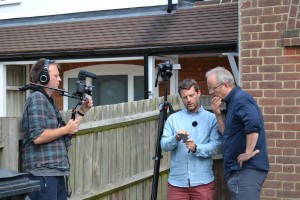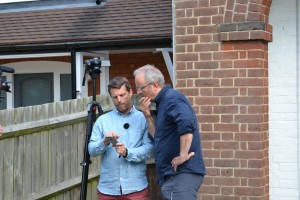Beautiful and powerful – Mike’s new build home
Our customer, Mike, originally contacted us with architects plans for a new build house. He wanted the house to be highly energy efficient… generating its own power without this negatively impacting on the character and aesthetic of his soon-to-be-built home.
Back to black
We loved working with Mike to bring this vision to life and as solar tiles weren’t widely available at the time of install, and there were technical constraints with the products too, we specified all black solar panels built into the roof.
The all black panels have a black frame, black mono crystalline cells, and a black back-sheet with a neat finish, blending particularly well with dark slate and whilst there is a slight additional cost when compared to traditional on-roof solar, savings are made by not having to install slates and tiles where the panels are located.
We worked with Mike’s main contractor and roofer to complete this solar installation and in terms of the look for Mike’s new home, the panels worked perfectly.
As Mike says,
“We selected the black panels largely for the aesthetics and, given that we were building a new house, it made no sense to put a roof covering on and then put the panels on top… may as well make the panels be the roof covering. It integrates with the house much better”.
Never a truer word, we say!
Panel power
Well, the aesthetic is certainly attractive, but what about the solar generation?
As Mike tells us,
“We can get over 30kWh on really sunny days. In 2021 to date, we have had 3253hWh. We have battery storage now too and our electricity bill is less than £50 per month, which isn’t bad for an electric only house and two electric cars”.
Not bad indeed!
A great experience
Here’s to architecture that not only looks beautiful, but that also definitely generates the power and here’s to a great solar installation experience all round. Jon, our Head of Residential Solar, led the project and as Mike says,
“It was a really good experience, easy, and Jon was great. He did what he said, when he said he would”.
We can’t say fairer than that!
Find out more
Check out some of our other residential case studies here
Discover how to get the most from your solar










